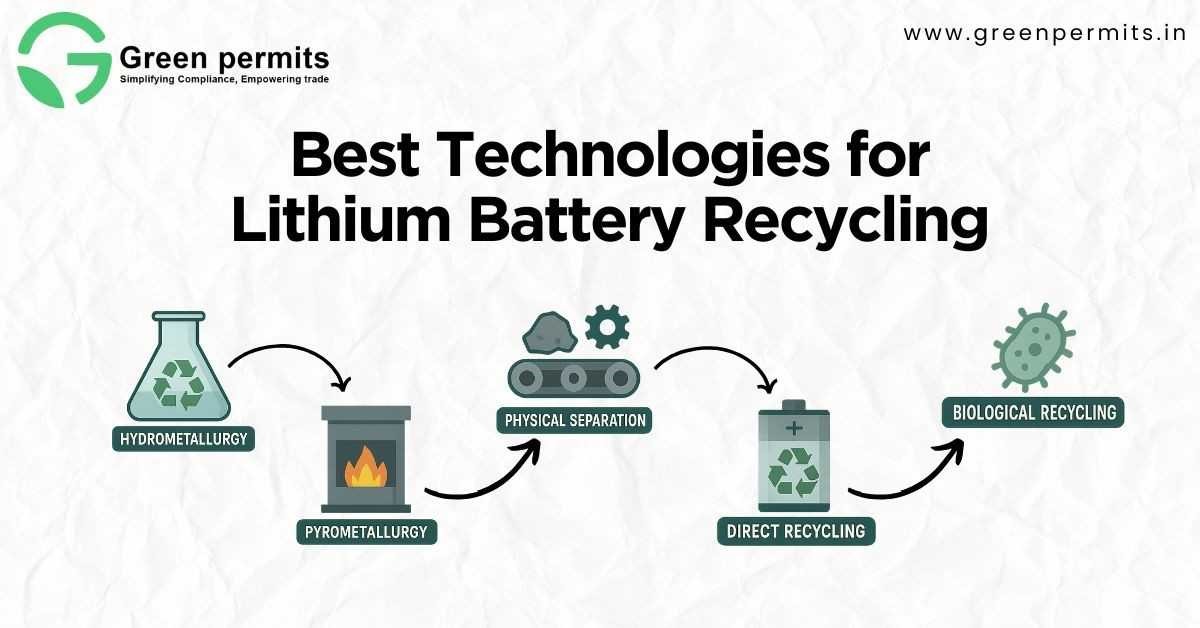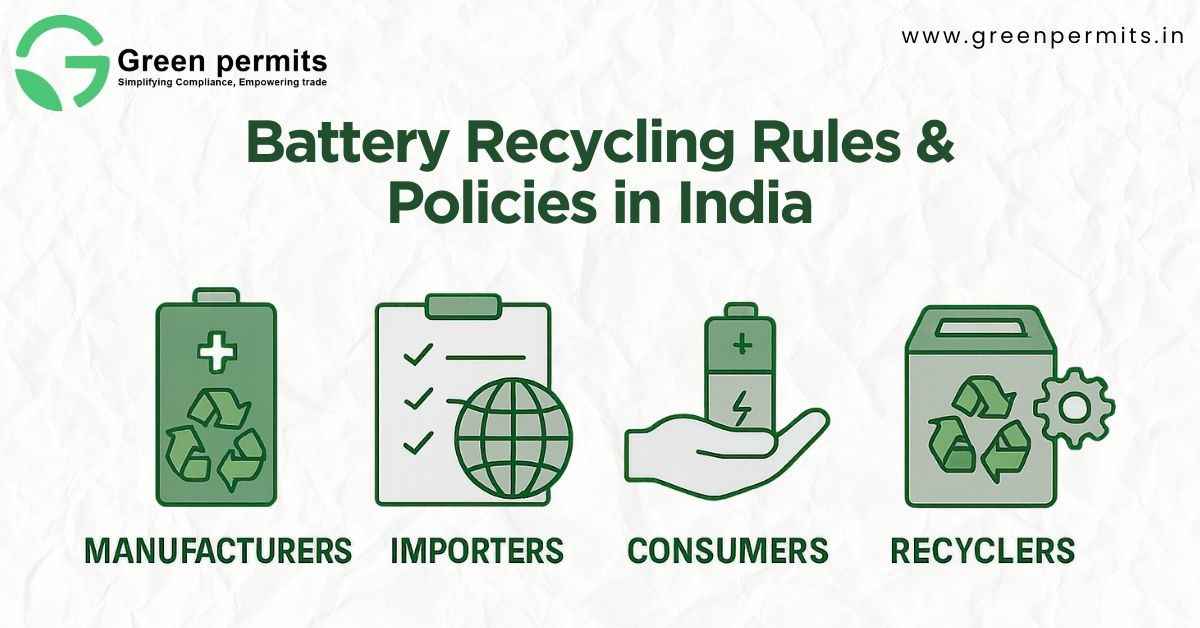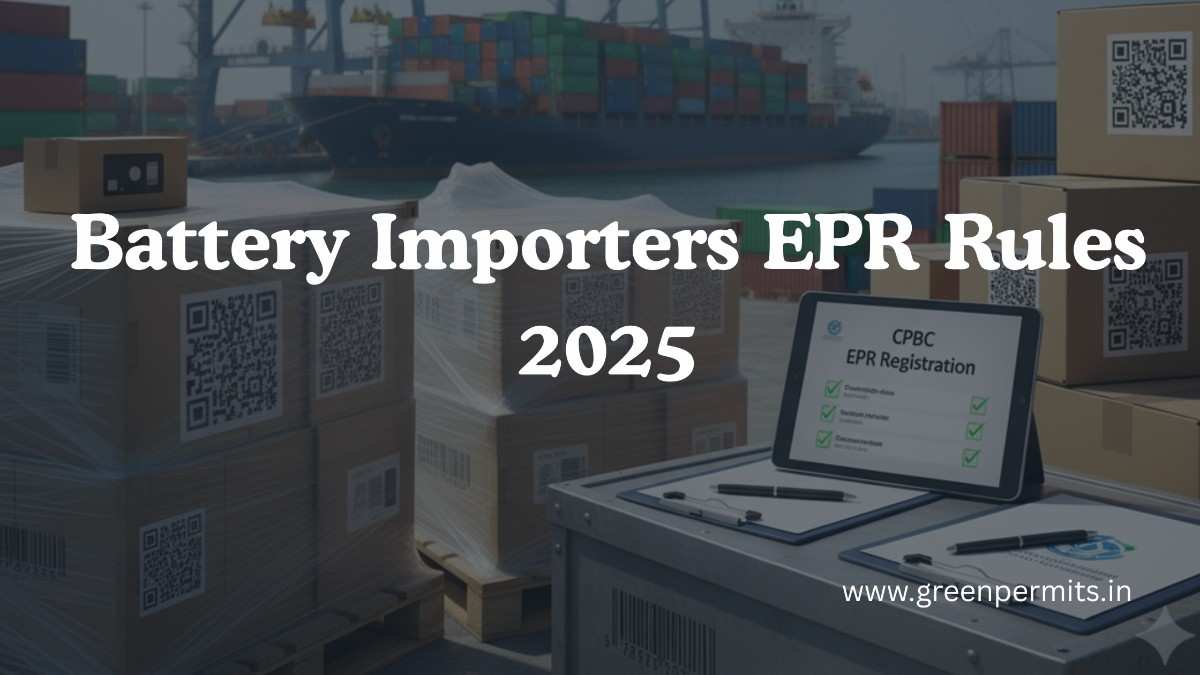Lithium batteries power everything today—from smartphones and laptops to electric vehicles and solar storage. But what happens when these batteries reach their end of life? For Indian businesses, this question is not just about sustainability—it’s about compliance, cost savings, and avoiding penalties. The Central Pollution Control Board (CPCB) and the Ministry of Environment, Forest & Climate Change (MoEFCC) have made lithium battery recycling a legal obligation under the Battery Waste Management (BWM) Rules, 2022 (amended in 2025).
If you’re a manufacturer, importer, or recycler, understanding the best technologies for lithium battery recycling isn’t just about technical know-how—it’s about running a compliant, profitable, and future-ready business.
Why Lithium Battery Recycling Matters
India’s demand for lithium batteries is booming, with NITI Aayog estimating a need of over 260 GWh by 2030. That translates into millions of used batteries every year. If not recycled, these batteries pose fire risks, soil contamination, and toxic emissions.
From a business angle, recycling is a chance to:
- Recover valuable metals like lithium, cobalt, and nickel.
- Reduce dependency on imports of critical minerals.
- Meet CPCB’s Extended Producer Responsibility (EPR) obligations.
- Avoid environmental penalties and plant closures.
Think of it this way—every tonne of batteries recycled can save your business thousands in raw material costs while also proving compliance in CPCB audits.
The Three Main Recycling Technologies
Globally, three technologies dominate lithium battery recycling. Each has its pros, cons, and feasibility in the Indian context.
1. Pyrometallurgy (Smelting-Based Recycling)
Pyrometallurgy uses high-temperature furnaces to melt down batteries and recover metals.
- Pros: Mature technology, good for cobalt and nickel recovery.
- Cons: High energy use, carbon emissions, poor lithium recovery.
- Business Impact: Suited for large-scale recyclers but tough for SMEs due to high capital and emission control costs.
2. Hydrometallurgy (Chemical Leaching & Extraction)
Hydrometallurgy dissolves battery materials in acids and extracts metals through chemical processes.
- Pros: High recovery rates (up to 90–95% for cobalt, nickel, lithium).
- Cons: Requires strong effluent treatment; compliance-heavy under Water Act consents.
- Business Impact: Currently the most scalable and CPCB-compliant option for Indian recyclers.
3. Direct Recycling (Cathode-to-Cathode)
Instead of breaking batteries into raw metals, direct recycling restores cathode material for reuse.
- Pros: Saves energy, cheaper in the long run, retains material structure.
- Cons: Still experimental in India, requires advanced R&D.
- Business Impact: Future-ready for EV recyclers, but not yet mainstream for plant investors.
Comparing the Technologies
| Technology | Recovery Efficiency | Setup Cost (Approx.) | Key Risks |
|---|---|---|---|
| Pyrometallurgy | 60–70% (cobalt/nickel), <30% lithium | ₹120–150 Cr for 10,000 TPA plant | High emissions, CPCB approvals complex |
| Hydrometallurgy | 85–95% for key metals | ₹80–100 Cr for 10,000 TPA plant | Chemical handling, effluent compliance |
| Direct Recycling | 70–80% (cathode materials) | ₹150+ Cr (R&D heavy) | Still experimental, limited CPCB guidance |
Interpretation: Hydrometallurgy is currently the most balanced choice for Indian SMEs aiming to stay compliant and profitable.
Compliance Under Battery Waste Management Rules
If you’re planning to enter battery recycling, compliance is non-negotiable. Under the BWM Rules 2022 (amended 2025):
- Recycler Registration: Mandatory with SPCB and CPCB before operations. Valid for 5 years.
- EPR Certificates: Recyclers generate certificates for metals recovered (lithium, cobalt, nickel, aluminium, copper, iron) which producers must buy to meet obligations.
- Barcoding: From Feb 2025, batteries must carry EPR registration numbers via QR/barcodes.
- Penalties: Non-compliance can lead to suspension of registration, loss of trading rights, and financial penalties running into lakhs per violation.
What Can Be Recovered from Lithium Batteries?
| Battery Type | Metals Recoverable | Value Proposition |
|---|---|---|
| Lithium-Ion (EV/Consumer) | Lithium, Cobalt, Nickel, Copper, Aluminium, Iron | High resale value; cobalt & nickel critical for EV industry |
| Lead Acid (still dominant in India) | Lead | Mature market, strong resale |
| Nickel-Cadmium / Others | Nickel, Cadmium, Iron | Smaller share, hazardous handling |
Interpretation: EV batteries offer the highest business opportunity due to cobalt and nickel recovery, which are import-dependent in India.
Risks of Non-Compliance
Many businesses underestimate compliance risks. Here’s the catch—CPCB conducts inspections within three months of granting recycler registration. If irregularities are found:
- Registrations can be suspended.
- EPR certificate trading rights can be revoked.
- Companies may face penalties under the Environment Protection Act, 1986.
For example, an SME recycler in Gujarat failed to update its EPR returns in 2023. The CPCB suspended its license for six months, halting all business operations. The cost? Over ₹1 crore in lost contracts.
Case Example: SME Recycler in Gujarat
A medium-scale recycler set up a 5,000 TPA hydrometallurgy-based plant in Gujarat in 2023. Key takeaways from their journey:
- Invested ₹45 Cr in plant and effluent treatment system.
- Partnered with an EV manufacturer to source waste batteries.
- Recovered cobalt and nickel worth ₹20 Cr annually.
- Faced delays due to missing a consent renewal—lesson learned: compliance filings are as critical as technology.
This example shows how technology + compliance = business success.
Future Technologies to Watch
While pyrometallurgy and hydrometallurgy dominate, new innovations are entering India:
- AI-powered sorting for faster dismantling.
- Bioleaching using microbes to recover lithium (still in pilot stage).
- Robotics for safer handling of EV batteries.
Indian recyclers investing early in R&D partnerships may gain a competitive edge.
Business Opportunities for Indian Companies
For entrepreneurs, lithium battery recycling isn’t just a compliance checkbox—it’s a billion-dollar opportunity. Consider these factors:
- Demand for EV battery recycling in India could exceed 50,000 tonnes annually by 2025.
- CPCB’s EPR certificate mechanism creates a tradable market for recovered metals.
- Recycling helps reduce dependency on critical mineral imports from China.
How Green Permits Can Help
At Green Permits, we simplify the complex maze of recycling compliance. Our consulting covers:
- EPR Authorization: End-to-end filing, documentation, and approval support.
- BIS Certification: Guidance on mandatory standards for battery components.
- Recycling Plant Setup: Feasibility, DPR, licensing, and layout planning.
Instead of juggling with SPCB portals, audits, and renewals, our experts handle it all so you can focus on scaling your recycling business.
FAQs on Lithium Battery Recycling Technologies
Hydrometallurgy is currently the most practical option—high recovery rates, scalable, and CPCB-compliant.
A 10,000 TPA hydrometallurgy plant costs around ₹80–100 Cr depending on technology and effluent treatment.
Yes. Registration with CPCB/SPCB is mandatory under the BWM Rules 2022. Operating without it can lead to suspension and penalties.
Yes. SMEs can start with smaller dismantling and pre-processing units and gradually scale to full recycling facilities.
These are tradable credits generated by recyclers for metals recovered from waste batteries. Producers must buy them to meet their legal obligations.
Suspension of license, penalties under Environment Protection Act, and loss of trading rights in the EPR market.
Conclusion
Lithium battery recycling is no longer a futuristic concept—it’s a present-day business necessity in India. With CPCB’s strict rules, the best technologies are those that not only maximize recovery but also keep your business compliant.
For Indian companies, hydrometallurgy stands out as the most scalable and profitable choice today, while direct recycling and bioleaching promise exciting opportunities in the future.
Ignoring compliance can mean penalties, shutdowns, and loss of market trust. But with the right partner, recycling can become a growth driver.
📞 +91 78350 06182 | 📧 wecare@greenpermits.in
👉 Book a Consultation with Green Permits









